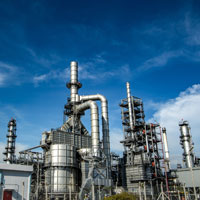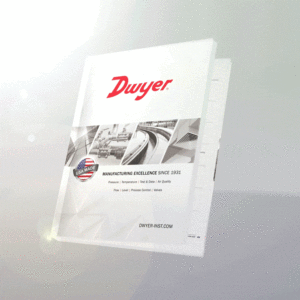 The cleaning of produced water during oil and gas production and exploration is a crucial, although costly endeavor. In the process of bringing oil and gas up to the surface from a well, several byproducts are also produced. Water is the largest of these byproducts by volume, with 882 billion gallons produced per day. This produced water contains a variety of other compounds and substances, including organic and inorganic compounds, grease, bacteria, and dissolved solids such as iron. Continue reading “The Intricacy of Proper Instrumentation in Cleaning Produced Water”
The cleaning of produced water during oil and gas production and exploration is a crucial, although costly endeavor. In the process of bringing oil and gas up to the surface from a well, several byproducts are also produced. Water is the largest of these byproducts by volume, with 882 billion gallons produced per day. This produced water contains a variety of other compounds and substances, including organic and inorganic compounds, grease, bacteria, and dissolved solids such as iron. Continue reading “The Intricacy of Proper Instrumentation in Cleaning Produced Water”
The New Catalog is Available… Get Yours Today!
 The summer is always a busy time for our team, as we check and double check the formatting and information of our annual instrumentation catalog. Now that autumn is here, we’re proud to announce that the new Dwyer Catalog is now available! Continue reading “The New Catalog is Available… Get Yours Today!”
The summer is always a busy time for our team, as we check and double check the formatting and information of our annual instrumentation catalog. Now that autumn is here, we’re proud to announce that the new Dwyer Catalog is now available! Continue reading “The New Catalog is Available… Get Yours Today!”
Manufacturing an Economic Dust Filtration System

Many customers have come to the Dwyer team asking: “What can Dwyer do to help with lean manufacturing?” In this article, we will discuss the Dwyer® Series SVT solenoid valve and timer enclosure and its cost savings advantages in a dust filtration system.
The Series SVT combines two integral components in a dust filtration system into one package: solenoid valves and a timer controller. In a dust filtration system, solenoid valves are used to send air through a pulse valve, such as our Series RDCS. Pulse valves release a quick spurt of air into a dirty dust cartridge filter, which, in turn, releases the dust from the filter. The timer portion of the dust filtration system is the brains of the operation controlling when the solenoids fire, the amount of time the solenoids are open, and when the next solenoid in the sequence fires. Continue reading “Manufacturing an Economic Dust Filtration System”
Downdraft Table Applications

There are many manufacturing processes that require human operators to perform tasks, which can create hazardous levels of particulate, fumes, gases, vapors, and mists. A few of these processes include: welding, sanding, grinding, brazing, laser cutting, tempering, and quenching. The Occupational Safety and Health Administration (OSHA) has regulatory requirements to reduce worker’s exposure to these hazards, which can cause respiratory and other health issues. Downdraft tables are workstations designed to better protect the operators who perform these tasks, in a bench top setting, by removing the hazardous material that laden the air from the worker’s breathing zone. Continue reading “Downdraft Table Applications”
A Dwyer Guide to the Digital Catalog
 In this age of virtual meetings and online connections, to “Google” something has become synonymous with quickly looking up information. For some, bookshelves are more for decor than they are functional, and trends are leading to becoming more environmentally-friendly and saving paper. Print media is not necessarily “dead,” but it is becoming much less prevalent as we journey forward in this digital age.
In this age of virtual meetings and online connections, to “Google” something has become synonymous with quickly looking up information. For some, bookshelves are more for decor than they are functional, and trends are leading to becoming more environmentally-friendly and saving paper. Print media is not necessarily “dead,” but it is becoming much less prevalent as we journey forward in this digital age.
When speaking on digital resources, we have to take this chance to talk about some of the benefits that our digital catalog can offer. Available on both desktop (via our website) and mobile (via the app), the digital catalog allows you instantaneous access to application guides, selection guides, and product specifications. Continue reading “A Dwyer Guide to the Digital Catalog”


